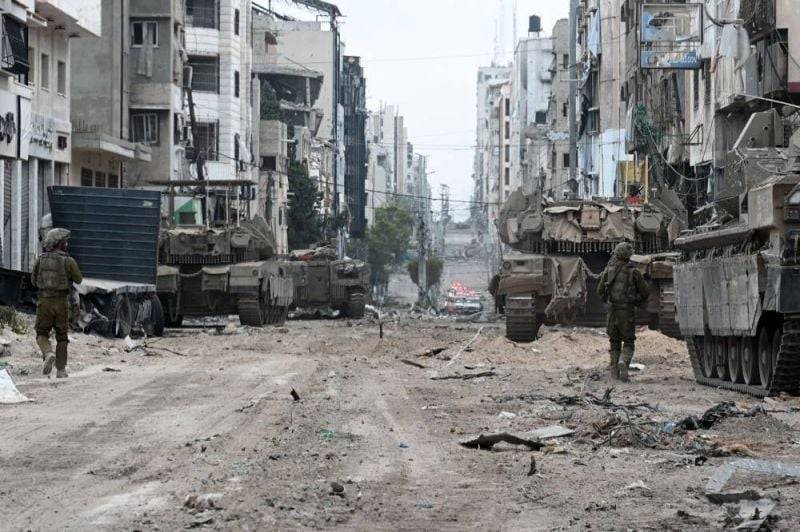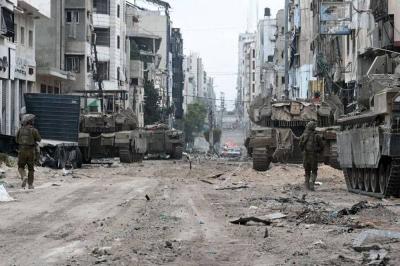Israel and the Islamic Resistance Movement "Hamas" began a four-day truce in Gaza on Friday morning, with the first group of hostages being released later that same day. What are the details of the agreement?
Under the agreement, both parties agreed to a four-day truce to facilitate the release of 50 women and minors under the age of 19 from the hostages, in exchange for the release of 150 women and minors from Palestinian detainees in Israeli prisons. It is expected that 50 hostages, out of approximately 240 held by "Hamas" following its attack on Israel on October 7, will be released in batches, possibly including 12 hostages each day over the four days of the truce. On the day the truce began, 13 Israeli hostages were released. In a separate conversation, ten Thais and one Filipino farm worker, who were captured while working in southern Israel, were also released. The parties involved described the cessation of fighting as a "humanitarian truce." Israel stated that "the ceasefire would be extended by one day for every batch of about ten hostages released." Hamas mentioned that "Israel agreed to halt air traffic over northern Gaza from 10:00 AM (08:00 GMT) to 4:00 PM (14:00 GMT) each day during the truce, and to completely suspend air traffic over southern Gaza throughout the duration of the truce." Additionally, Hamas noted that "Israel agreed not to attack or apprehend anyone in Gaza, allowing people to move freely along Salah al-Din Street, the main road used by many Palestinians fleeing northern Gaza when Israel initiated its ground invasion."
When did the agreement start? The truce between Israel and Hamas began on Friday morning, with the first group of hostages released later that same day. A spokesperson for the Qatari foreign ministry stated: "Lists of all civilians to be released from Gaza have been agreed upon, and Qatar hopes to negotiate a subsequent agreement for the release of other hostages by the fourth day of the truce."
How will the agreement be implemented? Qatar indicated that "the International Committee of the Red Cross is working in Gaza to facilitate the release of the hostages." The hostages were transferred on Friday through the Rafah crossing with Egypt, the only country besides Israel sharing a border with Gaza. During the truce, trucks carrying aid and fuel are expected to enter the Gaza Strip, where 2.3 million residents are suffering from food shortages. Many hospitals in Gaza have become non-functional, partly due to a lack of fuel for their generators. The Palestinian Red Crescent Society stated: "196 trucks loaded with humanitarian aid arrived on Friday, the largest convoy of its kind to reach Gaza since the war began." For its part, the Qatari foreign ministry noted that "an operations room in Doha will monitor the truce and the release of hostages and will have direct communication lines with Israel, the Hamas political bureau in Doha, and the International Committee of the Red Cross."
Who are the hostages being released? Hamas released 13 Israeli hostages yesterday, including four children and their mothers, as well as elderly women. The Israeli government stated: "More than half of the approximately 240 hostages are foreigners or dual nationals from about 40 countries, including Argentina, Britain, Chile, France, Germany, Portugal, Spain, Thailand, and the United States, in addition to civilians and Israeli soldiers captured since October 7. Not all the hostages are in the custody of Hamas."
Who are the released Palestinians and why were they detained? A total of 39 Palestinian women and children were released from Israeli prisons, some of whom were convicted or detained for charges related to possession of weapons and acts of violence. More than 100 additional Palestinians are expected to be released in the coming days, with the potential for more to be released if the truce is extended. The Palestinian Prisoner’s Club stated that "as of last Wednesday, there were 7,200 Palestinians in Israeli prisons, including 88 women and 250 minors aged 17 and under." Most of those on the list for release from Israeli prisons are from the occupied West Bank and Jerusalem, and were detained in incidents such as attempted stabbings, throwing stones at Israeli soldiers, making explosive devices, vandalizing property, and communication with hostile organizations. None of them are accused of murder. Many of them are under administrative detention, meaning they were held without trial.
Who negotiated the agreement? Qatar played a key role in mediating. Hamas has a political office in Doha, and the Qatari government maintains open communication channels with Israel, although it has not normalized relations unlike some other Gulf states. The United States also played an important role, as President Joe Biden communicated with the Emir of Qatar Sheikh Tamim bin Hamad Al Thani and Israeli Prime Minister Benjamin Netanyahu in the weeks leading up to the agreement. Egypt was also involved in the mediation negotiations to reach an agreement. Egypt, the first Arab country to sign a peace agreement with Israel, has played a mediation role for decades in resolving the Israeli-Palestinian conflict.
Why did the negotiations take so long? The agreement was announced 46 days after the war began, which has been one of the most violent conflicts between the parties. Israel claims that "Hamas' attack on it resulted in the deaths of 1,200 people," and subsequently conducted airstrikes and a ground incursion, resulting in the deaths of more than 14,000 Palestinians, which is significantly higher than casualty rates in recent wars. Mediating even a temporary agreement like this seemed to present a much greater challenge than in previous conflicts, given the intensity of the fighting, the large number of hostages, and Israel’s commitment to eliminate "Hamas" in Gaza. Preliminary negotiations for reaching an agreement between Israel and Hamas began days after the October 7 attack, but progress was slow. U.S. officials indicated that "this was partially due to the necessity of conducting communications between the warring parties through Doha or Cairo regarding every detail resolved, such as obtaining a complete list from Hamas of those to be released." Despite the agreement being in place, the ceasefire is temporary. Hamas has stated that "fingers are still on the trigger." Israel has confirmed that "the conflict will continue until all hostages are freed and Hamas is eliminated." When Israel launched its last major ground incursion in Gaza in 2014, it took 49 days for both sides to implement a ceasefire agreement, but that ended the major hostilities for several years.




